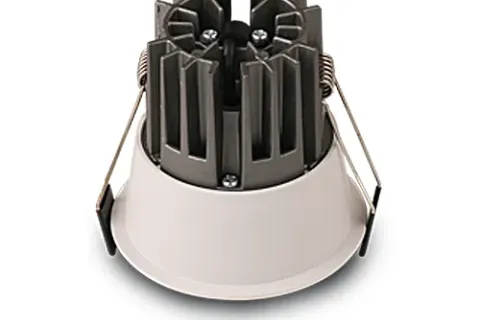LED itself is a point light source with strong divergence of light. In LED spotlights, through reasonable optical design and the role of lens or reflector, the propagation direction of light can be changed and the divergence of light can be reduced, thereby focusing the light beam to a specific area.
LED track light has a wider beam. Although it can adjust the direction and angle of illumination, its beam concentration is lower than that of spotlights. It is mainly used to provide uniform lighting effects and is suitable for large areas. lighting needs.
LED spotlight is a spotlight that uses LED (light emitting diode) as the light source. Compared with traditional light sources such as halogen lamps and incandescent lamps, LED spotlights have higher luminous efficacy, longer service life and lower energy consumption.
If you want the light in the bedroom to be softer and more uniform, and provide a comfortable sleeping environment, LED downlights are undoubtedly a more suitable choice. If you need to highlight certain decorative details or local areas in the bedroom, LED spotlights can provide more precise lighting.
For example, a 10-watt LED spotlight may output 800-1000 lumens, while a traditional halogen lamp of the same power can only output about 400-500 lumens. In other words, LED lamps are more energy-efficient and have higher light output than traditional light sources.
The beam angle of LED spotlights is generally between 10 degrees and 60 degrees. The beam angle design within this range can meet various concentrated lighting needs. Narrow beam LED spotlights have very small beam angles, usually between 10 degrees and 20 degrees, and are suitable for concentrated lighting at a long distance.
By using different lenses, reflectors or adjustable beam angle structures, LED spotlights can provide lighting effects ranging from narrow beams (such as 10 degrees) to wide beams (such as 60 degrees) to meet the needs of different places.







